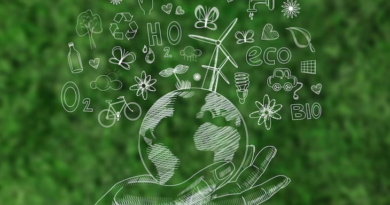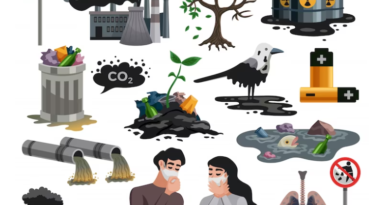Solutions to Environmental Problems
Effective Solutions for Environmental Challenges: A Comprehensive Guide
Environmental issues are critical challenges that affect the delicate balance of our planet. These issues arise from various human activities, industrial processes, and the constant demand for resources. Understanding the depth and breadth of these problems is essential for developing effective solutions. In this section, I will delve into the definition of environmental issues, explore the different types that plague our world, and highlight the major challenges that demand our attention.
What are Environmental Issues?
Environmental issues encompass a wide range of problems that result from human impact on the natural world. These issues can manifest at local, regional, and global levels, affecting ecosystems, biodiversity, climate, and the overall well-being of the planet. From pollution and resource depletion to habitat destruction and climate change, the scope of environmental problems is vast and interconnected.
Types of Environmental Issues
- Pollution: The release of harmful substances into the air, water, and soil, disrupting the natural balance and posing health risks to living organisms.
- Solid Waste Management: Improper disposal and management of solid waste contribute to land pollution and threaten ecosystems.
- Agro-Chemicals: The use of pesticides, fertilizers, and other chemicals in agriculture can lead to soil degradation and water pollution.
- Global Warming and Greenhouse Effect: The increase in greenhouse gas emissions, such as carbon dioxide, contributes to rising global temperatures and climate change.
- Radioactive Waste: Improper disposal of radioactive materials poses long-term threats to both the environment and human health.
- Ozone Depletion in the Stratosphere: The release of substances like chlorofluorocarbons (CFCs) leads to the depletion of the ozone layer, allowing harmful ultraviolet (UV) rays to reach the Earth’s surface.
- Degradation by Improper Resource Utilization and Maintenance: Uncontrolled exploitation of natural resources, coupled with inadequate maintenance of ecosystems, results in degradation and loss of critical habitats.
- Deforestation: Large-scale clearing of forests for agriculture, logging, and urbanization leads to habitat loss and negatively impacts biodiversity.
Major Environmental Issues
Understanding the major environmental issues is crucial for addressing the root causes and implementing effective solutions. The interconnectedness of these problems makes it imperative to adopt a holistic approach to environmental conservation and sustainable practices.
10 Environmental Problems
Environmental problems are multifaceted and demand immediate attention to prevent irreversible damage to our planet. In this section, I will examine ten major environmental issues, ranging from global concerns to localized challenges, each posing a significant threat to the delicate ecological balance.
Climate Change
Climate change is a pressing global issue driven by the increase in greenhouse gas emissions, primarily carbon dioxide, methane, and nitrous oxide. Human activities, such as burning fossil fuels, deforestation, and industrial processes, contribute to the warming of the Earth’s atmosphere. This warming leads to a myriad of consequences, including rising sea levels, extreme weather events, and disruptions to ecosystems.
Poverty
Environmental degradation and poverty are closely intertwined. Impoverished communities often rely heavily on natural resources for their livelihoods. Deforestation, pollution, and unsustainable resource extraction exacerbate poverty by depleting these essential resources, leading to a vicious cycle of environmental decline and economic hardship.
Gender Inequality
Environmental issues disproportionately affect women, particularly in developing countries where they often bear the brunt of resource depletion and climate change impacts. Addressing gender inequality is crucial for effective environmental conservation, as empowering women can lead to more sustainable resource management and resilient communities.
Fluorinated Gases Used in Refrigerants
Fluorinated gases, such as hydrofluorocarbons (HFCs), are potent greenhouse gases commonly used in refrigeration and air conditioning. While they contribute to global warming, viable alternatives and technologies exist to mitigate their impact, emphasizing the importance of transitioning to more environmentally friendly refrigerants.
Oil Spills
Oil spills pose significant threats to marine ecosystems, affecting marine life, coastal habitats, and local economies. Prevention measures, prompt response strategies, and the development of cleaner energy alternatives are essential components of addressing this environmental challenge.
Wasted Natural Resources
The unsustainable consumption and depletion of natural resources, such as water, minerals, and fossil fuels, contribute to environmental degradation. Adopting sustainable practices, resource-efficient technologies, and promoting conservation are crucial for mitigating the impact of resource depletion.
Plastic Pollution
Plastic pollution is a pervasive problem affecting oceans, rivers, and terrestrial ecosystems. Single-use plastics, inadequate waste management, and improper disposal contribute to the accumulation of plastic waste, harming marine life and ecosystems. Strategies to reduce plastic use, improve recycling systems, and promote circular economies are key to combating this issue.
Food Waste
Food waste not only contributes to the depletion of resources used in food production but also exacerbates environmental issues through the emission of greenhouse gases from decomposing organic waste. Sustainable food production, efficient supply chains, and consumer awareness are vital in addressing this problem.
Ocean Acidification
The absorption of excess carbon dioxide by the oceans leads to ocean acidification, negatively impacting marine life, particularly organisms with calcium carbonate skeletons, such as corals and shellfish. Mitigating ocean acidification requires reducing carbon emissions and implementing measures to protect vulnerable marine ecosystems.
Depletion of Ozone Layer
The depletion of the ozone layer, primarily caused by the release of ozone-depleting substances like CFCs and halons, poses risks to human health and the environment. International agreements, such as the Montreal Protocol, have made significant strides in phasing out these substances, highlighting the importance of global cooperation in addressing environmental challenges.
Solutions to Environmental Problems
Addressing environmental problems requires a concerted effort from individuals, communities, industries, and governments. In this section, I will explore solutions to the major environmental issues outlined earlier. By adopting these strategies, we can work towards mitigating the impact of human activities on the planet and creating a more sustainable and resilient future.
Environmental Challenges
Before delving into specific solutions, it is crucial to understand the overarching challenges faced in environmental conservation. These challenges include:
- Complexity of Interconnected Issues: Environmental problems are often interconnected, making it challenging to address them in isolation. Solutions must consider the intricate relationships between different issues.
- Global Nature of the Issues: Many environmental problems, such as climate change and pollution, have global implications. International collaboration and cooperation are essential to develop effective solutions.
- Balancing Economic Development and Conservation: Achieving a balance between economic development and environmental conservation is a delicate task. Sustainable practices that consider both ecological and economic aspects are necessary.
- Behavioral Change: Encouraging individuals and communities to adopt sustainable lifestyles and consumption patterns is a significant challenge. Education and awareness campaigns play a crucial role in promoting behavioral change.
Environmental Issues Solutions
- Go Green:
- Transitioning to renewable energy sources, such as solar and wind power, helps reduce reliance on fossil fuels and mitigates climate change.
- Supporting sustainable practices in agriculture and forestry promotes biodiversity conservation and reduces environmental degradation.
- Provide Cheap & Clean Energy:
- Investing in and promoting the use of clean and affordable energy sources, including solar, wind, and hydropower, helps reduce carbon emissions and combat climate change.
- Implementing energy efficiency measures in industries and households contributes to sustainable energy consumption.
- Reduce Paper Use:
- Embracing digital documentation and communication minimizes the demand for paper, reducing deforestation and promoting sustainable forest management.
- Encouraging paper recycling and responsible paper sourcing practices further mitigates the environmental impact of paper use.
10 Environmental Solutions
Building on the understanding of environmental challenges and specific solutions to address major issues, this section explores a comprehensive set of strategies and initiatives. These solutions are designed to contribute to global efforts in achieving sustainable development and environmental conservation.
UN Sustainable Development Goals (SDGs)
Overview:
The United Nations Sustainable Development Goals (SDGs) provide a universal framework for addressing global challenges, including environmental issues. Adopted by all UN member states, these 17 goals aim to end poverty, protect the planet, and ensure prosperity for all by 2030.
- Relevance to Environmental Issues:
- Goals such as “Climate Action” (Goal 13) and “Life on Land” (Goal 15) directly target environmental challenges, emphasizing the need for sustainable resource use and climate mitigation.
- Implementation:
- Governments, businesses, and civil society collaborate to implement and monitor progress towards the SDGs, fostering a holistic approach to environmental sustainability.
Green Innovation
Definition:
- Green innovation involves developing and adopting environmentally friendly technologies, practices, and products to minimize ecological impact.
- Examples:
- Sustainable agriculture practices, eco-friendly building materials, and energy-efficient technologies contribute to green innovation.
- Incentivizing research and development in green technologies promotes continuous improvement.
Affordable and Clean Energy
Importance:
- Access to affordable and clean energy is crucial for sustainable development and mitigating the environmental impact of energy production.
- Strategies:
- Investing in renewable energy sources like solar, wind, and hydropower.
- Enhancing energy efficiency in industries and promoting energy-saving practices in households.
Electrify Everything
- Transition to Electric Power:
- Shifting from fossil fuel-powered systems to electric alternatives reduces carbon emissions and dependence on non-renewable resources.
- Examples:
- Electric vehicles, electric heating systems, and electrified public transportation contribute to a cleaner and more sustainable energy landscape.
Carbon Taxes
- Concept:
- Carbon taxes place a financial cost on carbon emissions, encouraging industries and individuals to reduce their carbon footprint.
- Implementation:
- Governments levy taxes on carbon emissions, providing economic incentives for businesses to adopt cleaner practices and technologies.
Conservation of Natural Resources
- Sustainable Resource Management:
- Implementing policies and practices that ensure the responsible use and conservation of natural resources.
- Examples:
- Sustainable forestry practices, responsible water management, and biodiversity conservation efforts contribute to the conservation of natural resources.
Carbon Capture and Sequestration (CCS)
- Definition:
- CCS technologies capture carbon dioxide emissions from industrial processes and power generation, preventing them from entering the atmosphere.
- Application:
- Implementing CCS in power plants, industrial facilities, and other emission sources helps mitigate climate change.
Sustainable Business and Investing
- Business Practices:
- Encouraging businesses to adopt sustainable practices, such as reducing waste, embracing circular economy principles, and prioritizing social and environmental responsibility.
- Impact Investing:
- Investors support businesses that prioritize sustainability, fostering the growth of environmentally conscious industries.
Improved Food Production
- Sustainable Agriculture:
- Adopting environmentally friendly farming practices, reducing the use of agrochemicals, and promoting organic farming contribute to sustainable food production.
- Precision Agriculture:
- Utilizing technology for precise and efficient farming, minimizing waste and environmental impact.
Sustainable Homes
- Energy-Efficient Design:
- Constructing and retrofitting buildings with energy-efficient technologies and materials to reduce energy consumption.
- Green Building Standards:
- Adopting green building certifications and standards that prioritize sustainability in construction.
Environmental Frameworks and Certifications
- Overview:
- International frameworks and certifications, such as ISO 14001 and LEED, provide guidelines for organizations to adhere to environmentally sustainable practices.
- Implementation:
- Companies and institutions adopt these standards to ensure their operations align with environmentally responsible principles.
By embracing these comprehensive solutions, individuals, businesses, and governments can contribute to a more sustainable and resilient future, addressing environmental challenges at both local and global levels.
Specific Solutions to Individual Problems
To tackle environmental problems effectively, it is essential to address specific issues with targeted solutions. In this section, I will explore solutions for individual environmental challenges identified earlier in the article, offering practical approaches and initiatives.
Loss of Biodiversity
- Habitat Conservation:
- Establishing protected areas and wildlife reserves to preserve natural habitats and support diverse ecosystems.
- Species Conservation Programs:
- Implementing programs to protect endangered species, including breeding and reintroduction initiatives.
Human-Wildlife Conflict
- Habitat Planning:
- Developing land-use plans that consider both human needs and wildlife habitats, reducing the likelihood of conflict.
- Community Engagement:
- Involving local communities in conservation efforts, fostering coexistence and understanding between humans and wildlife.
Ocean Noise and Vessel Strikes
- Regulation and Monitoring:
- Implementing and enforcing regulations to reduce anthropogenic noise in oceans and prevent vessel strikes on marine life.
- Technological Solutions:
- Developing and adopting technologies to make vessels more detectable by marine animals, minimizing collision risks.
Plastic Pollution
- Reduce Single-Use Plastics:
- Encouraging the use of reusable items and promoting alternatives to single-use plastics.
- Waste Management:
- Improving waste management infrastructure to ensure proper disposal and recycling of plastic waste.
Intensive Farming of Animals
- Transition to Sustainable Farming:
- Encouraging and supporting practices such as organic farming, rotational grazing, and agroecology to reduce the environmental impact of intensive farming.
- Alternative Protein Sources:
- Promoting the development and consumption of plant-based and lab-grown protein alternatives.
Food Waste
- Education and Awareness:
- Educating consumers about the environmental impact of food waste and promoting mindful consumption.
- Food Recovery Programs:
- Implementing programs to rescue and redistribute surplus food to reduce overall food waste.
Contamination of Soil
- Soil Remediation Techniques:
- Implementing soil remediation methods to address contamination, such as phytoremediation and bioremediation.
- Regulatory Measures:
- Enforcing regulations on the use of hazardous substances and promoting responsible waste disposal to prevent soil contamination.
Non-Vegetarian Diet
- Plant-Based Diet Promotion:
- Encouraging the adoption of plant-based diets through awareness campaigns and incentives.
- Sustainable Meat Production:
- Supporting sustainable and ethical practices in animal farming to reduce the environmental impact of meat consumption.
Genetic Erosion
- Conservation of Crop Diversity:
- Establishing seed banks and conservation programs to protect and preserve diverse plant genetic resources.
- Promotion of Traditional Crops:
- Encouraging the cultivation and consumption of traditional and indigenous crops to maintain genetic diversity.
Water Pollution
- Wastewater Treatment:
- Implementing advanced wastewater treatment technologies to reduce the release of pollutants into water bodies.
- Pollution Prevention Programs:
- Educating industries and communities about pollution prevention measures and promoting responsible waste disposal.
Hazardous Waste Disposal
- Proper Waste Management:
- Enforcing strict regulations on the disposal of hazardous waste and promoting safe disposal practices.
- Alternatives and Substitutes:
- Encouraging the development and use of less hazardous materials to minimize the generation of hazardous waste.
By tailoring solutions to the specific challenges outlined in this section, we can address the root causes of environmental problems and work towards a more sustainable and harmonious relationship with our planet.
Practical Actions for Individuals
Individual actions play a crucial role in contributing to the collective effort of addressing environmental problems. In this section, I will explore practical and achievable steps that individuals can take to make a positive impact on the environment. These actions empower people to be part of the solution and promote a more sustainable way of living.
Replace Disposable Items with Reusable
- Single-Use Plastics:
- Opt for reusable water bottles, shopping bags, and containers to reduce reliance on disposable plastics.
- Choose products with minimal packaging to reduce overall waste.
- Disposable Cutlery and Utensils:
- Carry reusable utensils and say no to disposable cutlery when dining out or ordering takeout.
- Clothing and Textiles:
- Embrace sustainable fashion by choosing clothing made from eco-friendly materials and supporting second-hand or vintage shops.
Pass on Paper
- Digital Documentation:
- Shift towards digital documentation and communication to reduce the demand for paper.
- Use electronic devices for note-taking and sharing information instead of paper.
- Eco-Friendly Paper Products:
- When paper is necessary, choose recycled and eco-friendly options to support sustainable forestry practices.
Conserve Water & Electricity
- Water Conservation:
- Fix leaks promptly, use water-efficient appliances, and practice mindful water use in daily activities.
- Consider installing rain barrels to collect rainwater for watering plants.
- Energy Efficiency:
- Switch to energy-efficient appliances and light bulbs to reduce electricity consumption.
- Turn off lights, electronics, and appliances when not in use to conserve energy.
Support Local & Environmentally Friendly Practices
- Local Produce:
- Choose locally sourced and seasonal produce to support local farmers and reduce the carbon footprint associated with transportation.
- Environmentally Friendly Businesses:
- Support businesses that prioritize sustainability, eco-friendly practices, and ethical sourcing.
Recycle (& then Recycle Properly)
- Separation of Recyclables:
- Properly sort recyclables from general waste to ensure effective recycling.
- Familiarize yourself with local recycling guidelines and facilities.
- Reducing Contamination:
- Rinse containers before recycling to reduce contamination and improve the efficiency of recycling processes.
By incorporating these practical actions into daily life, individuals can contribute to the larger effort of addressing environmental problems. These steps, when adopted collectively, create a significant positive impact on the planet and promote a more sustainable and responsible approach to living.
Conclusion
In conclusion, the intricate web of environmental issues demands a multifaceted approach, encompassing global initiatives, targeted solutions, and individual actions. By understanding the interconnected nature of challenges such as climate change, biodiversity loss, and pollution, we can work towards a sustainable future. The United Nations Sustainable Development Goals provide a comprehensive framework, while innovative strategies like green innovation and carbon capture contribute to broader environmental solutions. Specific interventions addressing individual problems, such as plastic pollution and intensive farming, ensure a nuanced and effective response. Furthermore, the role of individuals in adopting sustainable practices, reducing waste, and supporting eco-friendly initiatives cannot be overstated. Collectively, these efforts pave the way for a more harmonious relationship between humanity and the planet, fostering resilience, conservation, and a brighter environmental future.





